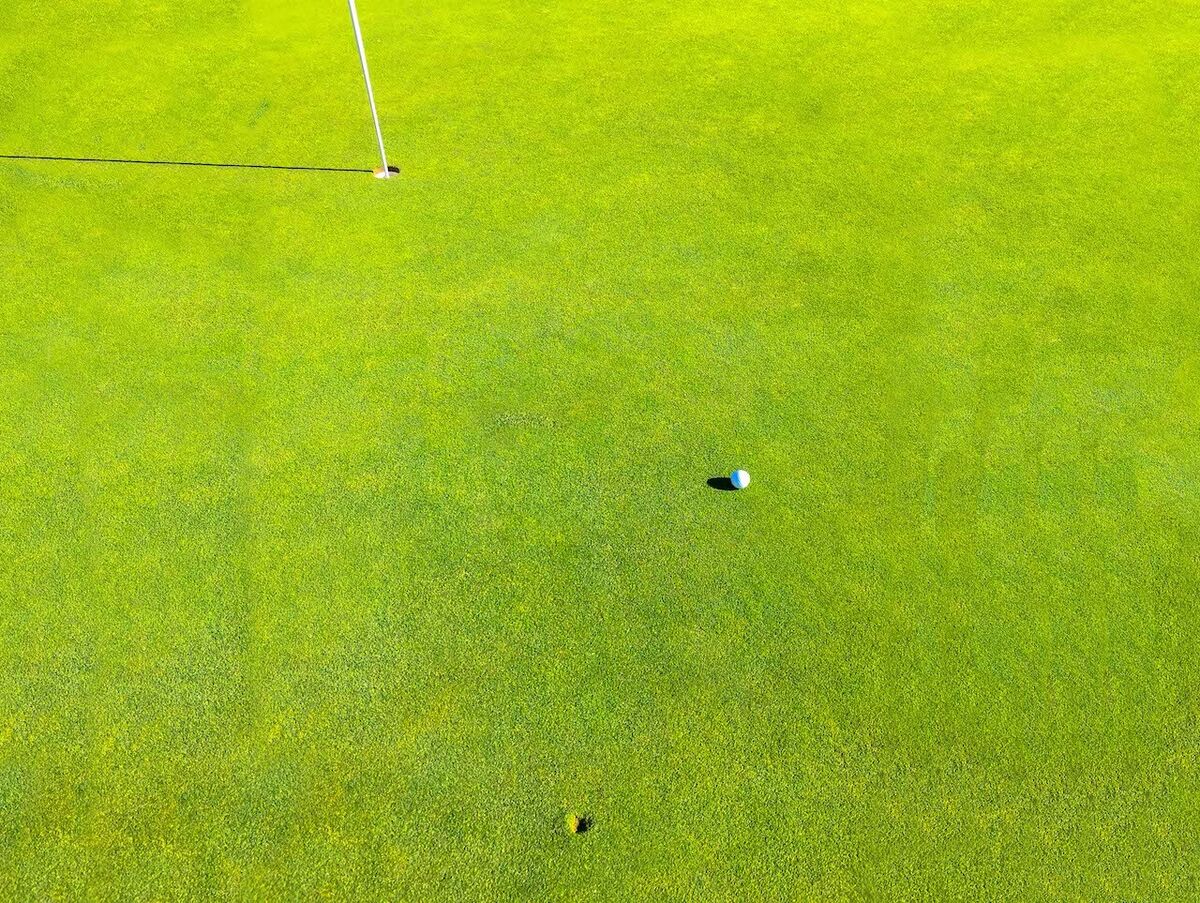How to Put Backspin on a Golf Ball in 4 Steps

If you’ve ever watched professional golfers hit shots into the green on TV, you’ve probably thought to yourself “I wish I could put backspin on a golf ball like that.” Well, there’s good news, you can!
While it’s a shot that looks like it's reserved for the professionals, if you know when and how to add backspin to your golf shot, you can impress your playing partners the next time you’re on the course. Follow these steps and techniques to add this shot to your repertoire.
Step 1: When and Why Put Backspin on a Golf Shot?
It may be fun to watch your ball hit the green and suck back, but the skill will lose its appeal quickly if you’re constantly watching your ball roll away from the hole, making your upcoming putt more difficult. So when and why should you put some extra zip on your shot? When you’re approaching a green with trouble in front, or when the hole is in the front of the green, it could benefit you to play the ball past the hole, farther from the trouble, and let it work back to the cup with backspin.
The lie of your approach shot is equally as important as hole location. When grass gets between the clubface and the ball, contact with the grooves is obstructed, and spin is much lower. That means shots from the rough won’t spin nearly as much as those from the fairway, and seldom, if ever, have enough spin to suck backwards. In other words, be sure you’re in the fairway and can make clean contact if you plan on playing backspin.
Another factor that impacts how much spin will be transferred to the ball is swing speed. The harder you swing the club, the more spin the ball will have. Consider this before estimating the roll-out or backspin of your shot. If you’re hitting a short shot, inside 40 yards or so, it’s unlikely you’ll be able to hit the ball with enough clubhead speed to create backspin without hitting it well over the green. However, if you’re playing from a yardage that allows for a full swing, or something close to it, you’ll create much more backspin.
With all that considered, if you’re in the fairway from a full-swing yardage, facing a front-to-middle hole location, it could be a green-light opportunity to play for some backspin, especially if you need to carry some trouble, like a green-side bunker or water.
Step 2: Setting Up To Put Backspin on a Golf Shot
Once you’ve determined that your situation calls for a shot that lands beyond the hole and sucks back towards the flag, there are few factors that can stack the odds of a successful shot in your favor, including your equipment. Once you’re in the fairway, the rules of golf won’t allow you to switch to a ball that’s more likely to give you the spin you want, but it’s worth knowing that not all balls are created equal, and some will spin more than others. If you plan on playing this shot regularly, it’s worth using a ball designed for high-spin on green-side shots.
The piece of equipment you can control before hitting a shot that will spin back is the club you use. The more lofted the club you use, the more spin your shot will produce. Obviously, your yardage will have a major impact on your club selection, so don’t try to hit a sand wedge from 8-iron distance in hopes of some satisfying backspin. That doesn’t mean you won’t be able to spin back a short iron, but the more club you take, the less backspin you should plan for.
Your physical setup to hit a spinner is pretty basic. Take a slightly narrow stance, with your feet just inside shoulder width. Your ball position should be in the middle of your stance. If the ball is too far back in your stance, you’ll deliver the club with less loft, taking spin off of it. Too far forward is no good, either.
Step 3: Swing Technique to Put Backspin on a Golf Ball
It’s finally time to hit the ball, and wait anxiously to see if it indeed spins back to the hole. For the best chance of success, there’s one more concept to understand, and that’s dynamic loft. Loft refers to the angle of the clubface, and dynamic loft is the amount of loft delivered into the shot. If you strike the ball with significant forward shaft lean, you will reduce dynamic loft.
Forward shaft lean is generally a good thing at impact, but considering that we already established that more loft will equate to more spin, you’ll want to avoid too much forward shaft lean if you want maximum backspin on your shot. This is where precision comes into play, because while too much forward shaft lean will reduce spin, you’ll ideally deliver the club with the shaft just ahead of the clubhead, and you certainly don’t want the clubhead to pass the shaft before impact.
The final thing to consider is your angle of impact. Again, delivering the club too steep will reduce your dynamic loft, and therefore, spin. A shallower angle of attack is ideal to take advantage of all the loft your club has to offer. To execute this, aim to take a shallow divot on the target side of the ball.
Step 4: Hitting Golf Shots With Backspin
Once you learn how to hit golf shots with backspin, you’ll want to keep track of how much you can expect the ball to spin back with each club, and use that information to adjust your target. Adding this shot to your game can help you shoot lower scores, and will most definitely impress your friends and playing partners, and give you some extra excitement throughout your round.